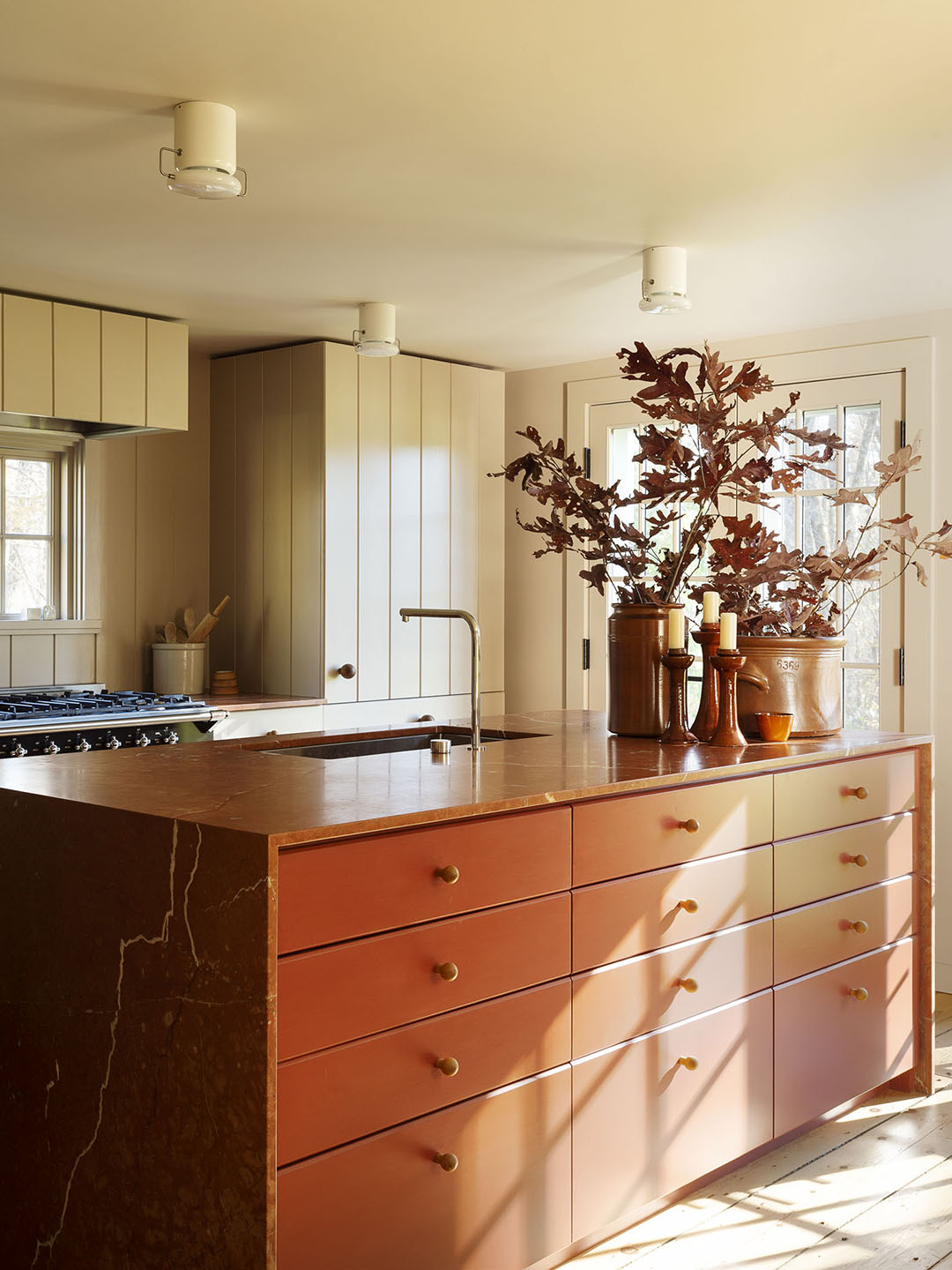We may earn revenue from the products available on this page and participate in affiliate programs.
What even is a cabinet? It’s a question design firm Workstead—whose new book, Workstead: Interiors of Beauty and Necessity (Rizzoli), hits shelves October 12—often ponders when planning out storage for a project. The result of its philosophical approach: wardrobes, cupboards, and kitchen islands like you’ve never seen them before.
“Built-ins can be used to resolve quirky spaces, create thoughtful spatial transitions, and set an intention for a room,” cofounder Ryan Mahoney explains. “Our guiding principles for millwork are context, functionality, craftsmanship, and quality materials that age gracefully.” In an excerpt, cofounders Stefanie Brechbuehler, Robert Highsmith, and Mahoney discuss their love of built-ins—and why practical storage is allowed to bring as much to a space as the decor.
The Bedroom, the Light, and the Wardrobe

A curving stairway leads to an intimate sequence of second-floor spaces, whose interior coves forming stairs, doors, and walls all echo the rounded geometry of the pavilion’s exterior corners. The bedroom’s interior eschews walls and closets, instead using a freestanding wardrobe and Workstead-designed Tower pendant to organize the space into zones of activity, decompression, and stillness.
Full Circle

A drum-shaped island located in the center of the kitchen encourages a flow of people, in order to meld cooking and entertaining, while a butler’s pantry off to the side helps with storage and prep work. The island’s curved doors are finished in the cane that often appears in subtropical interiors, and a retractable breakfast counter as well as a fruit bowl carved undiscernibly into the marble countertop can be deployed into service when necessary.
The Cupboard Under the Stairs

The living room flanks one side of the kitchen, where hand-painted aubergine cabinets enclose a 15-foot-long island, as well as storage tucked under the staircase. Punctuated by hand-turned oak pulls, the kitchen provides a counterpoint to the living room’s texture, while on the kitchen’s far side, Workstead again opted for a sensuous treatment for a dining area. With the assistance of a local artisan, they lined the space in cane and cypress cabinets framing a south-facing window seat.
Bigger Is Better

In the kitchen, an island that appears oversize at first glance turns out to perfectly accommodate a gamut of food preparation, gathering, and diaper changing—sometimes simultaneously. The island, coated in Farrow & Ball’s Picture Gallery Red and wrapped in Rojo Alicante marble, echoes the brick masonry that appears elsewhere in Gallatin House. An opposite-facing stove allows the occupant to turn his back on the social action in order to concentrate on the meal or peacefully take in the view of the meandering tributary.
Hidden Talents

Atop a radiant-heated brick floor, the mudroom features custom oak cabinets that hide a closet, as well as a stacked washer and dryer; integrated shelving allows laundry folding to take place on the spot, without intruding upon the floor area allocated for sneakers and boots.
